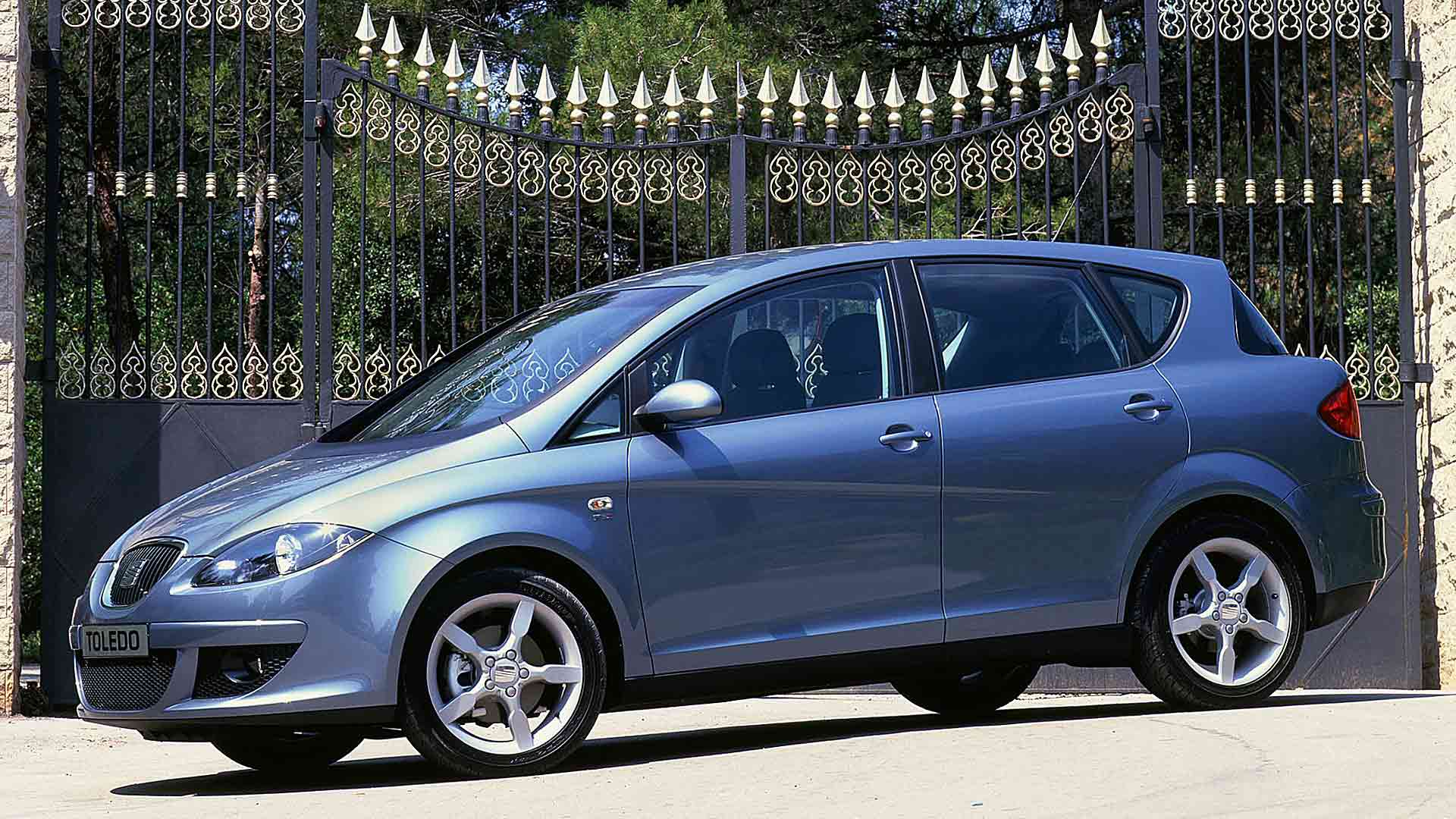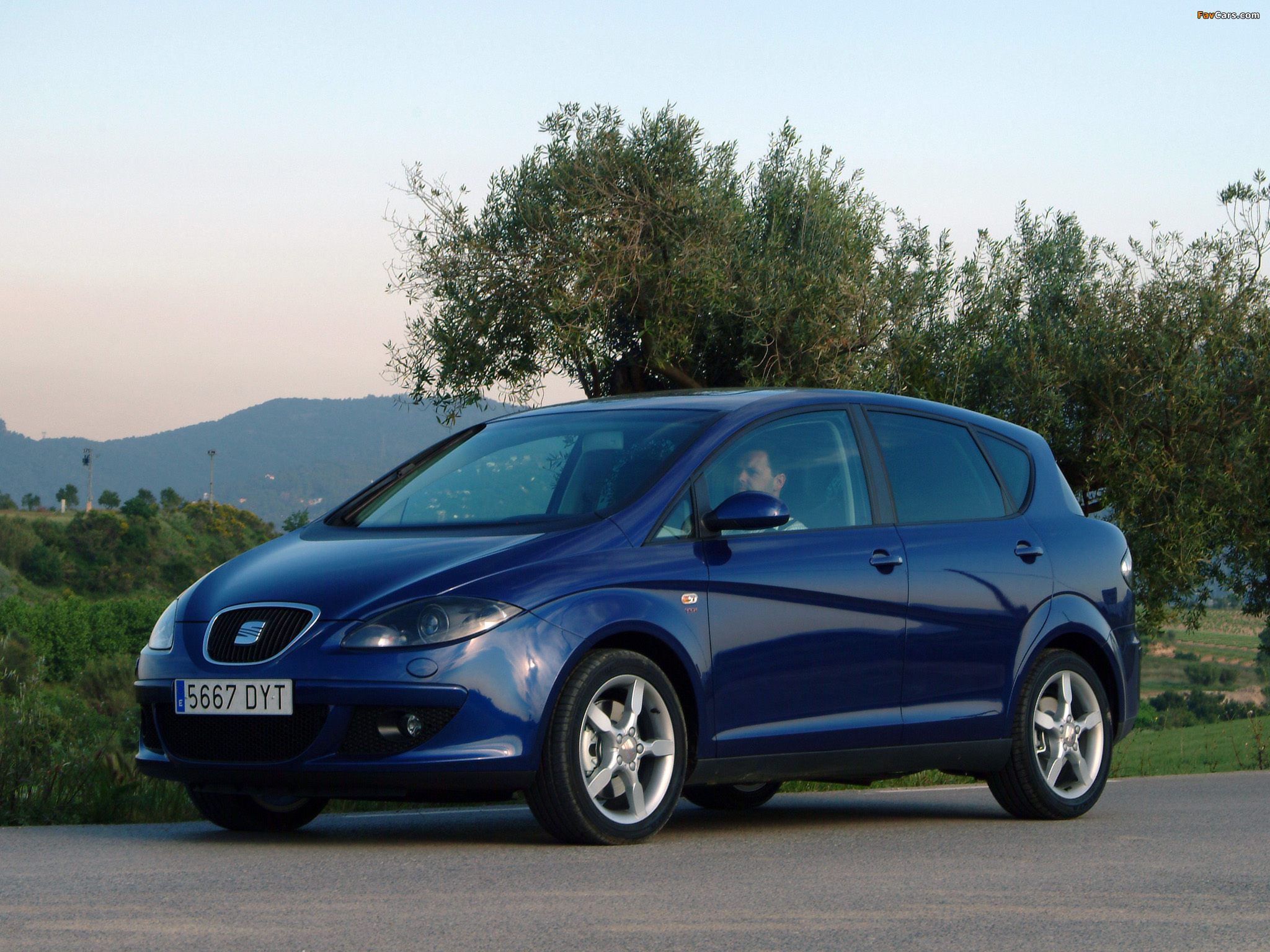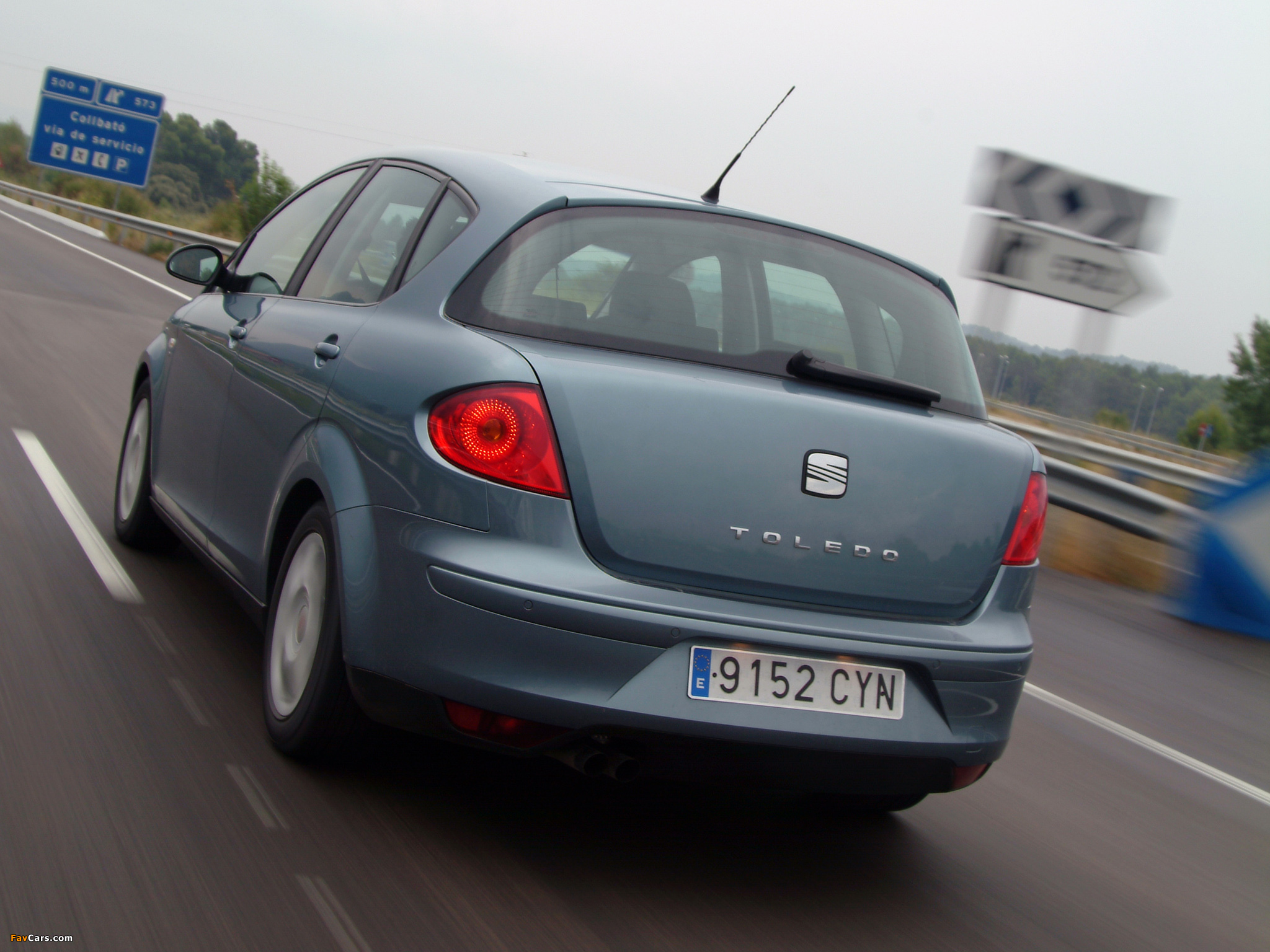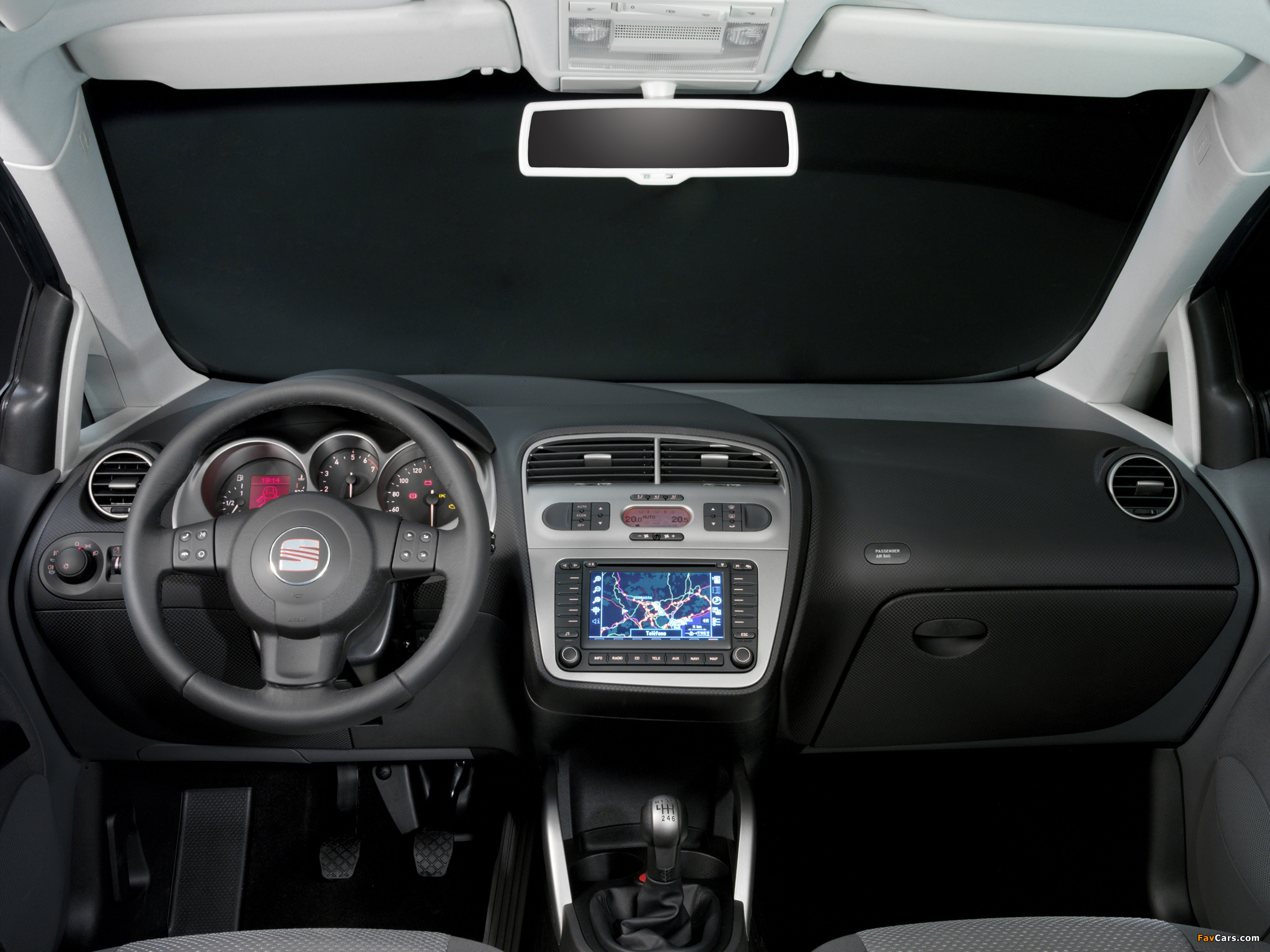You could sort of see the logic, but not the beauty. True, the Seat Toledo had never been automotive eye candy, but when the Mk3 version arrived in 2004, it suddenly became a whole lot easier to appreciate the modestly inoffensive aesthetic of versions one and two.
The original Toledo of 1999 (pictured below) was a five-door hatchback that looked like a saloon. Designed by ItalDesign’s Giorgetto Giugiaro, it was distinctive for the arrow-like shape of its rear doors, and road manners rather better than you would expect of a budget machine aimed mainly – and very successfully – at Spanish taxi drivers.

They liked its spacious back seat, enormous boot, keen pricing, mechanical robustness and local build. The Toledo was based on the innards of the Volkswagen Golf Mk2, and in GT form it proved surprisingly adept and very enjoyable to drive. This despite its cabin’s habit of exfoliating plastic trim under the duress of big bumps, high heat and hard cornering. Most early Toledos ended up with at least one piece of plastic trim surfing the carpet, and often a small shoal.
Putting the boot in

The Toledo Mk2 (picture below) was simply a Leon hatchback with a boot. The latter was quite a handsome hatch and it sired a reasonable-looking Toledo, which was more sophisticated and better made. Its interior components also tended to stay where they had been screwed, clipped or glued.
Yet it was less distinctive, despite the option of a 2.3-litre Volkswagen V5 engine that made for a subtly swift machine. Keen prices and a tempting pile of equipment produced a good package, especially as it was reliable. And like the previous Toledo, its boot was enormous, once again endearing it to Spanish cabbies.
In Britain, however, this Toledo was completely overshadowed by its Leon sister. The handsome styling and performance orientation of the hatchback being one of the high-points of Seat’s short history.
Licence to build

Sportiness and big boots, then. Seat was becoming known for both by the time the second-generation Toledo entered production, but the brand was also infamous within the car industry as the Volkswagen Group’s problem child. Lack of profit was the issue, along with a shortage of ideas on how to make one.
Most of the brands in VW’s ever-growing portfolio had long histories and a strong sense of the kind of cars they should be making. Seat, by contrast, had started life as a licensed builder of Fiats during the early 1950s, and while it had occasionally gone its own way during this era – most impressively with the pretty 1975 1200 Sport coupe – it was more an assembler than a creator of cars.
The breakdown of its relationship with Fiat in 1982 produced one-and-a-half cars of its own making. The half was the Seat Ronda, which was an obvious evolution of Fiat Strada that it had just finished making. The entire car was the 1984 Ibiza – the first SEAT developed during its brief period of independence, albeit with substantial help from ItalDesign and Porsche, whose engineering consultancy helped develop the car’s so-called ‘System Porsche’ engines.
By this point, the company was already making Volkswagens, the two firms rapidly edging closer until VW took a 51 percent share in Seat in 1986.
‘The Spanish Alfa Romeo’

Volkswagen’s investment saw Seat continue to develop new models using VW platforms, its Polo-based Ibiza Mk2 proving a big hit – and not only in Spain. VW boss Ferdinand Piech’s decision to place Seat under Audi management roof in 2002 – along with Lamborghini – saw the Spanish brand attempt to provide Alfa Romeo-like cars at keener prices.
Then, having allegedly decided to head this way, the company proceeded to develop a series of family-oriented models, starting with the Altea: a not-unattractive cross between a hatchback and a higher-riding MPV. Then came the Leon Mk2, and shortly after that, the third Toledo.
All these had several things in common beyond their Volkswagen Group platforms and powertrains. Which was that they were essentially the same car, but in different heights and lengths. The trio shared the same nose, all had flanks sporting an unmissable descending crease line vaguely suggestive of sportiness, and all were the work of a Walter da Silva-led design team that included Brit Steve Lewis. Lewis had a major influence on the trio, and later became Seat’s overall design boss.
Space over style

Both the Leon and Altea were good-looking designs with some contemporary flair. The Toledo, by contrast, was less happy. Most of it was the same as the Altea for budget reasons, severely limiting the designers’ scope. But in order to provide it with a reason to exist, they had to add the Toledo’s trademark big boot. And from the rear there was no mistaking it had a very large boot indeed, its back end protruding like Kim Kardashian’s, if rather less arrestingly.
What it looked more like, in fact, was the back end of another big miss from Europe’s car industry during the early part of this century: the Renault Vel Satis. The latter was executive car that has almost finished sinking without trace. And the 2005-08 Seat Toledo looks like heading the same way.
Although the Altea robbed it of many customers, the effect of the third-generation Toledo’s arrival was much the same as jabbing a balloon with a knife. Functionally it was great, providing a boot big enough for an ambitious camping holiday – or indeed many balloons – but buyers weren’t interested.
A Rapid recovery

Toledo sales tanked, tumbling from 39,000 in 2004 to 21,000 the following year. And this was nothing to 2005’s spectacular plunge to below 9,000, then less than 5,000 the year after. Strangely, there were slightly more Toledos sold in 2008, but by then it was all over. The last few hundred cars were sold in 2009.
After the collapse came a hiatus, while Seat wondered what to do next. The answer came with the opportunist 2012 Toledo, otherwise known as the Skoda Rapid, the two cars being near-identical. And yes, both have big boots.
Now that Seat is pursuing family SUVs, it’s quite possible that the Toledo will not return, but with it dies a once-major piece of Spain’s car-making history. However, the Toledo’s best year was its first, when the Mk1 sold an impressive 106,000 examples – many more than the Mk3 managed during its entire back-end-blighted life.
ALSO READ:
1989 Seat Ibiza Mk1 review: Retro Road Test
Great Motoring Disasters: Alfa Romeo 156
Lancia Thema 8.32: the sensible saloon with a Ferrari engine



[…] Seat Toledo Mk3: sticking the boot in […]